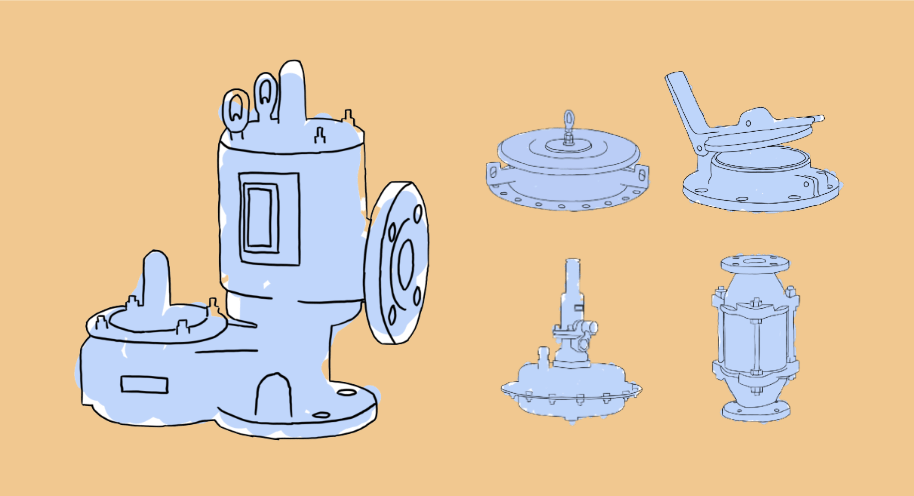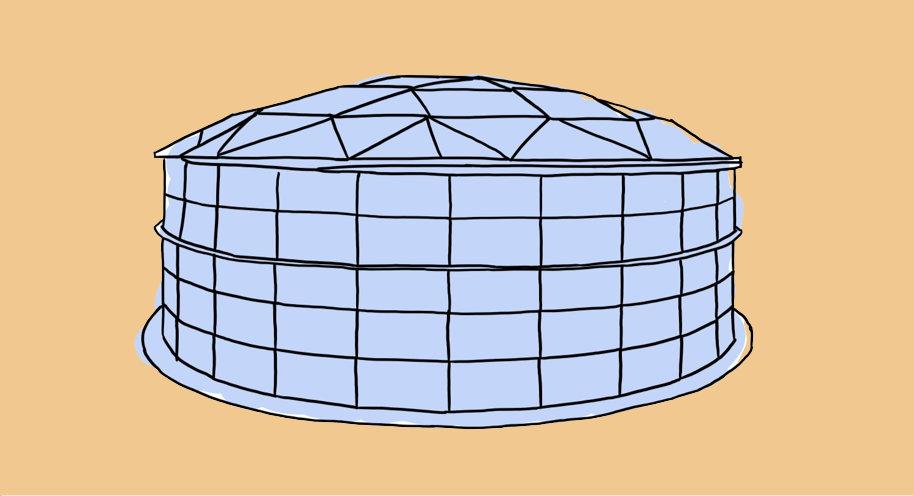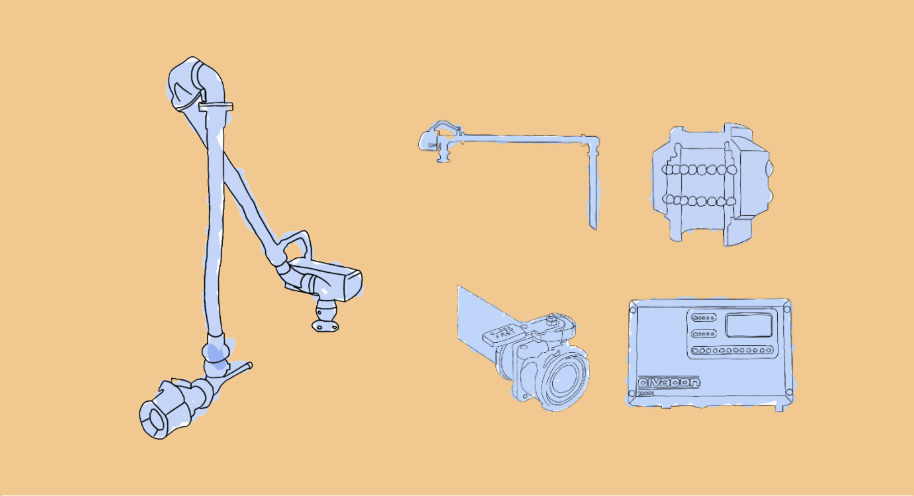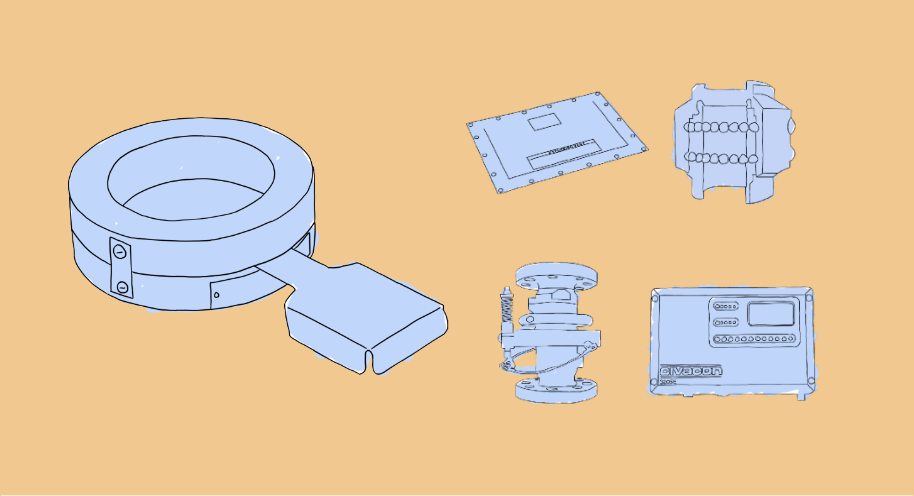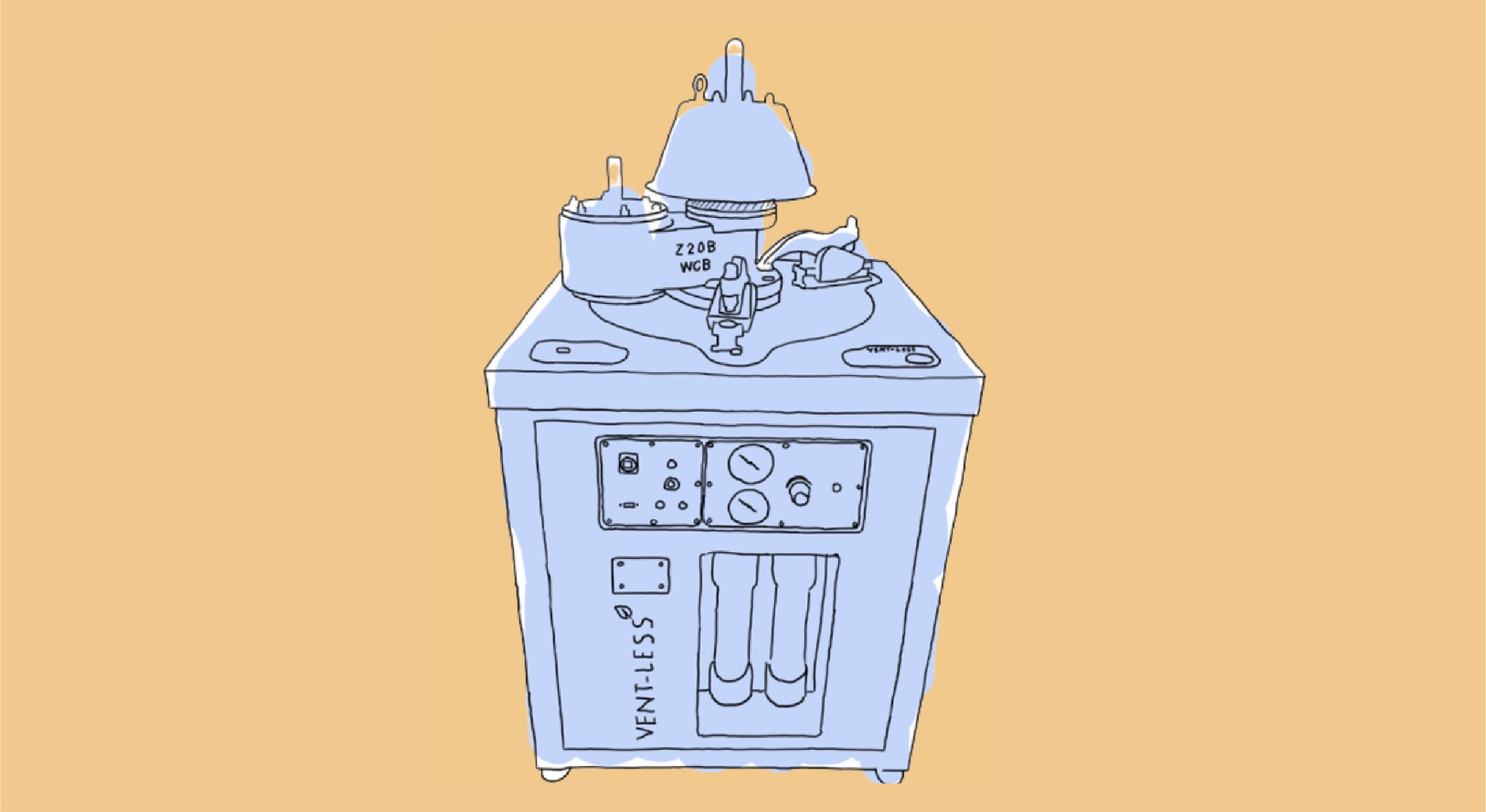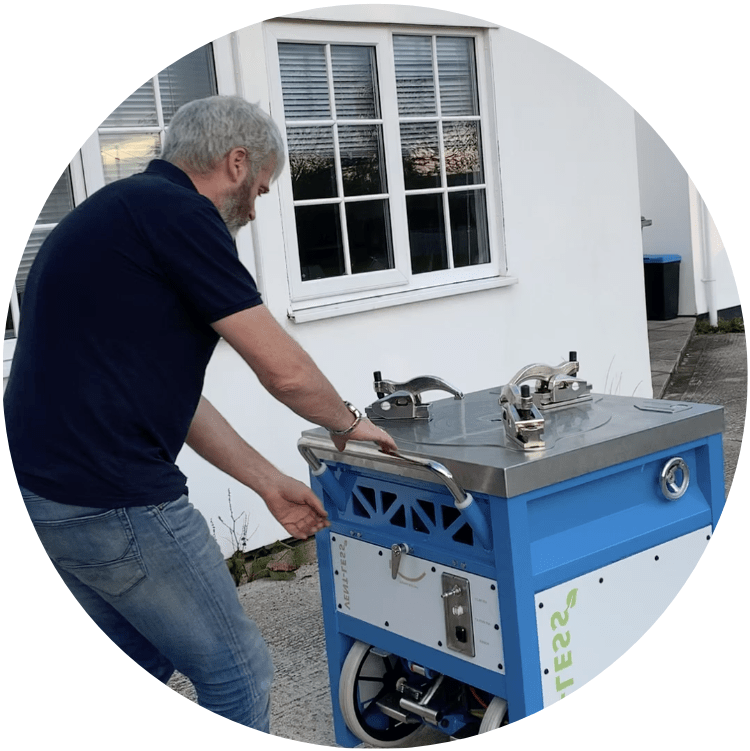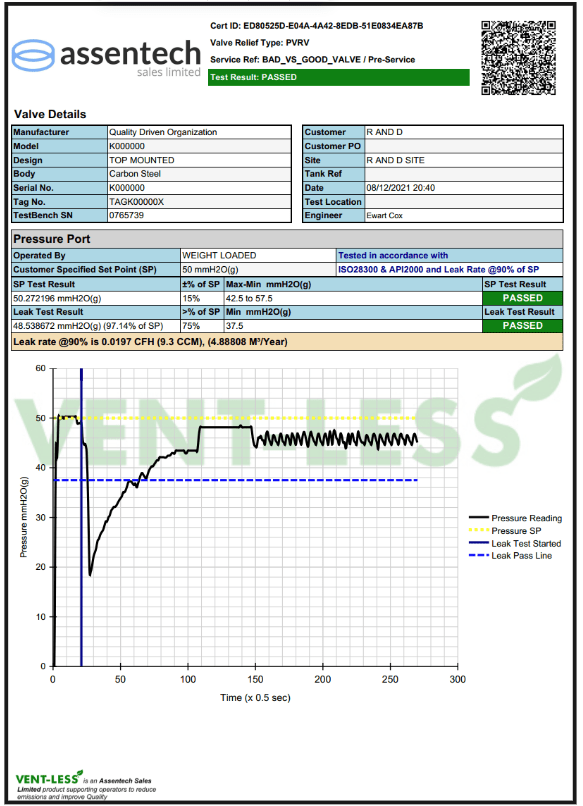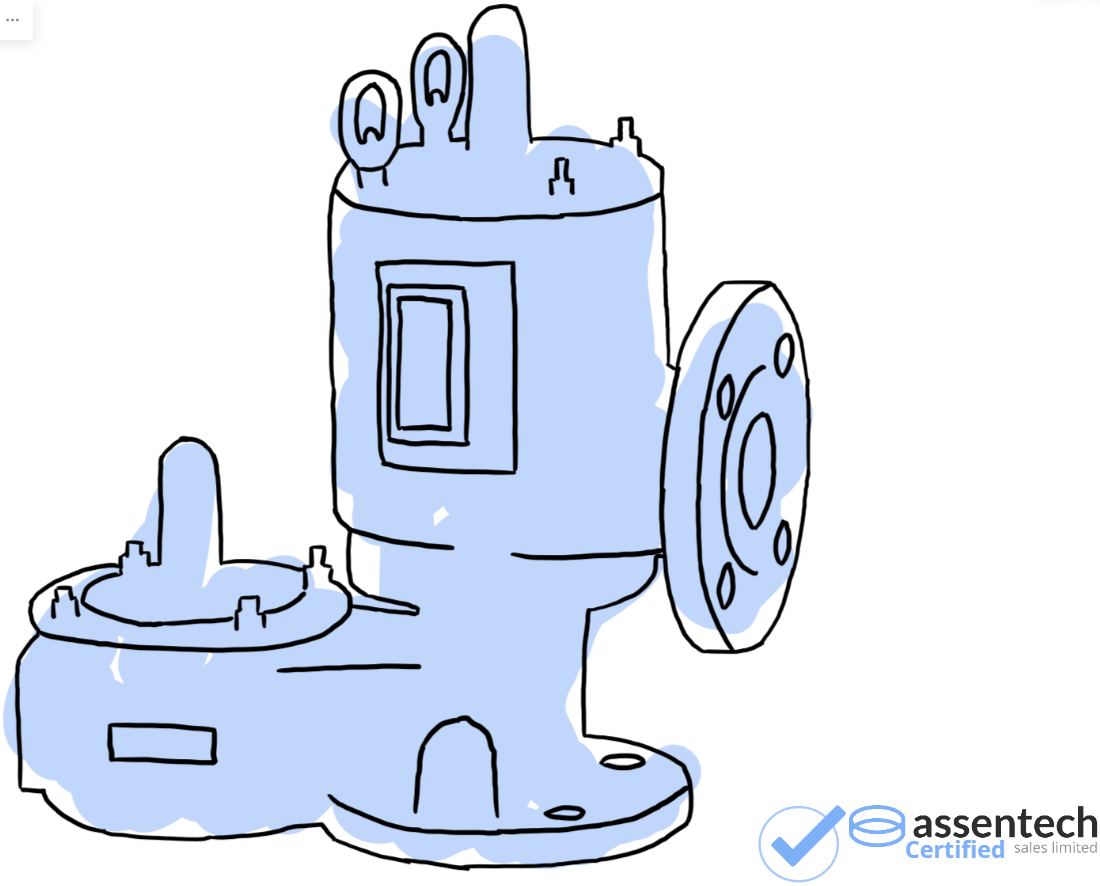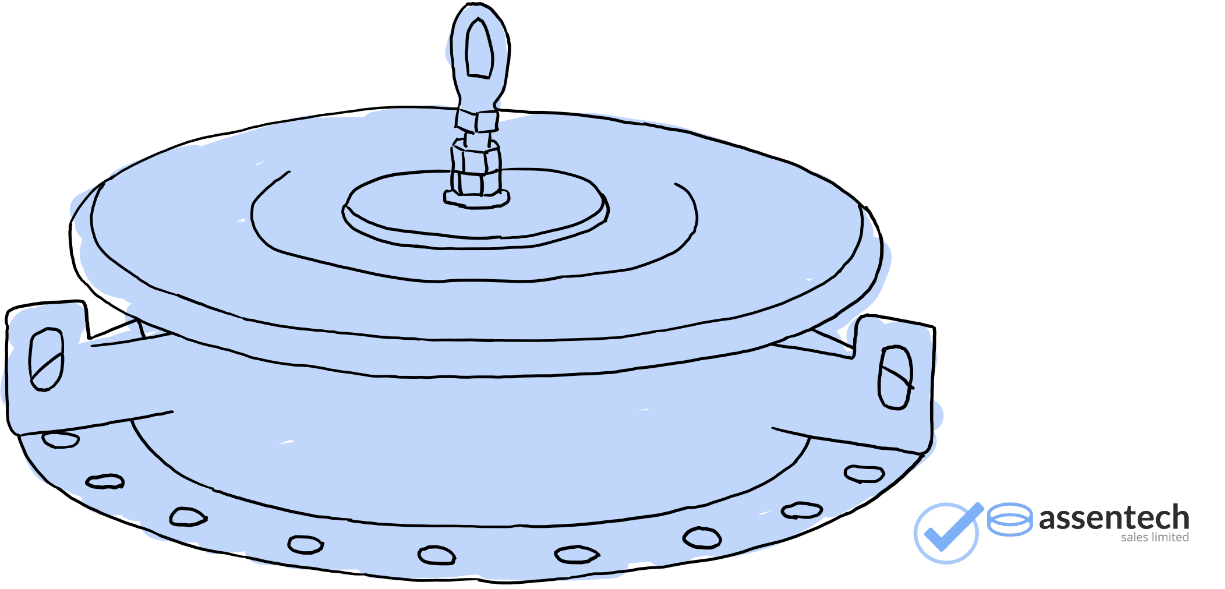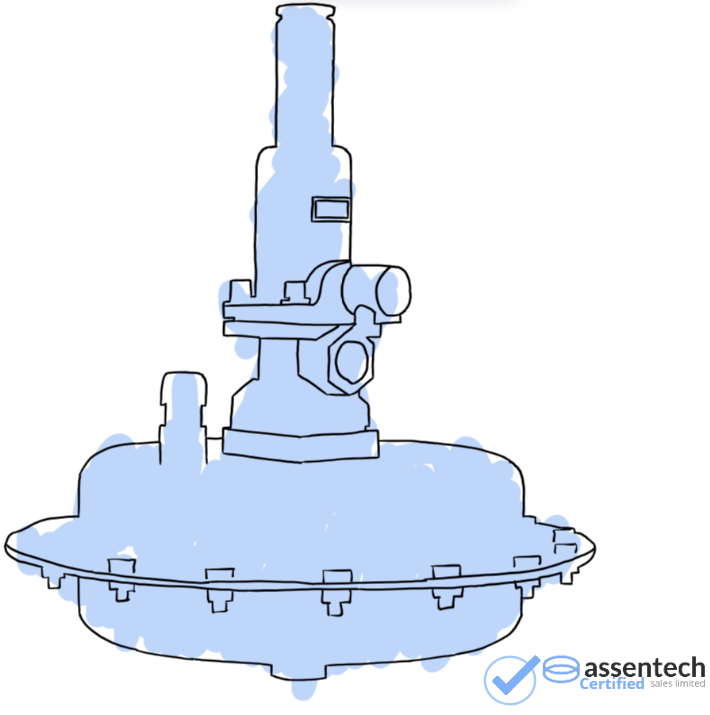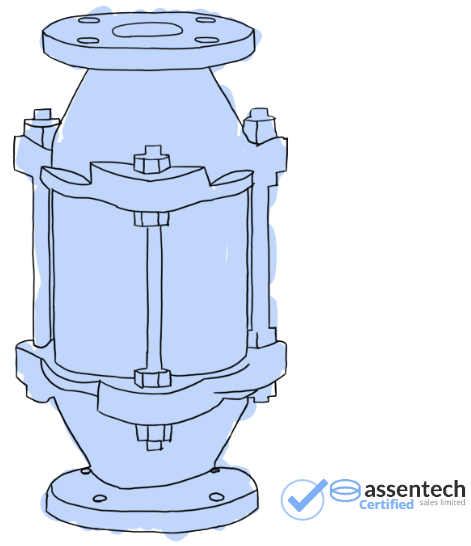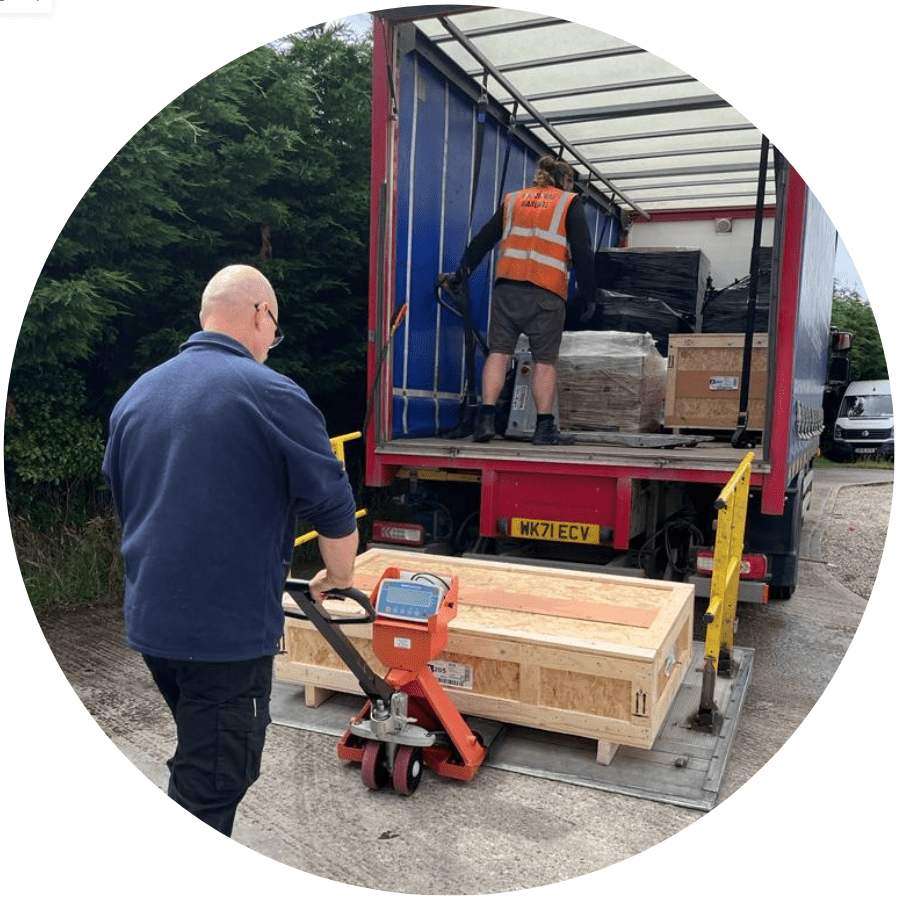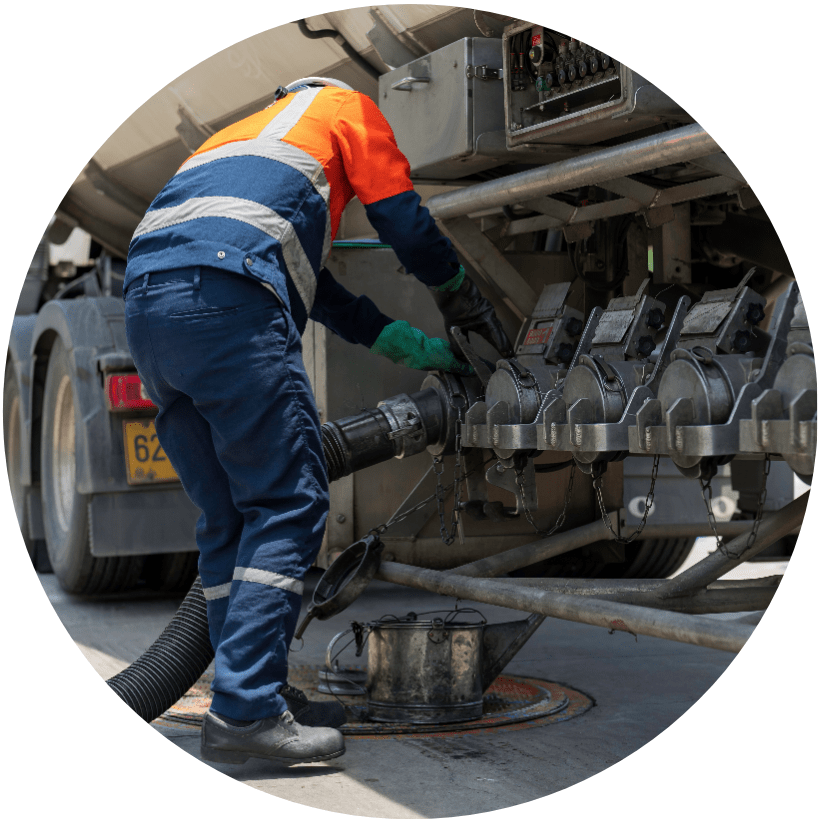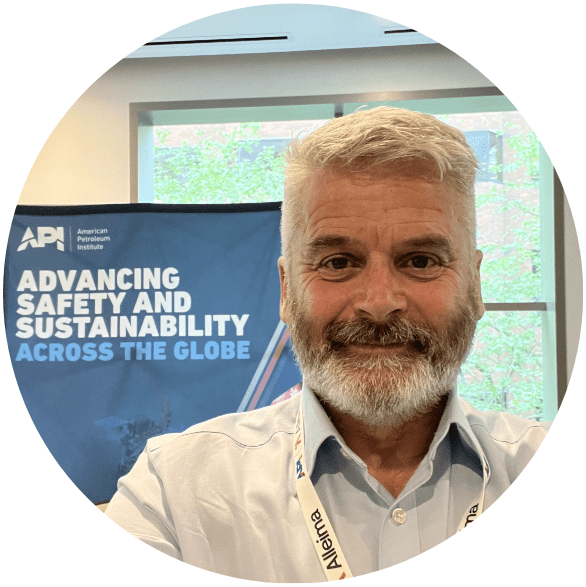Assentech Sales Limited is your ultimate partner for tank venting system maintenance and inspection. As a renowned industry expert, we uphold the highest safety and operational standards including API2000 and ISO28300 for valves and EN16852 for flame arresters. With our commitment to regular, documented inspections and functional efficiency tests, we ensure that any risk is assessed to mitigate exposure for our customers.
Need advice on the right breather valve? Our technical expertise extends to determining valve suitability and media compatibility. We have access to factory-specific valve sizing software, providing you with a comprehensive support package. We champion a thorough and systematic approach to maintenance, as detailed in our written scheme of examination for all activities.
Pre-commissioning doubts? Assentech offers an on-site breather valve “peace of mind check”. Our technicians will perform individual functionality tests using our Vent-Less test bench at your facility. This service includes a set point check, verified flow curve, and leak rate, all according to API2000 test protocol. To demonstrate your due diligence and duty of care, each. Each unit will be issued with a test certificate to evidence the management of ageing assets.
End Users are responsible for maintaining comprehensive records on all site assets, traceable with serial number, which must include historical information on purchase, inspection and maintenance for each asset as part of a site central database. Having this complete history at your fingertips can aid in regular reviews and continuous improvement of your tank venting systems.
As the manufacturer of the revolutionary Vent-Less Test Bench technology, Assentech delivers unique and irrefutable solutions. We support the global tank storage industry by generating instant API2000 Test certifications, providing evidence of individual breather valve performance, functionality, and leakage. With our expertise, innovative technology, and dedicated support, we set the industry standard for tank venting advice, product supply, and inventive solutions. Choose Assentech Sales Limited for a partnership that keeps you safe, compliant, and profitable.
Click on each product below to discover how we can provide tailored Maintenance & Inspection for your Tank Venting Needs.
Breather Valves Maintenance & Inspection
An efficient breather valve that is designed to optimise the maximum allowable working pressure (MAWP) will reward the Operator with reduced evaporation losses leading to better quality stored product, minimised staff exposure and lower risk of flammable vapour clouds drifting around the site. Service intervals range from 6 months to a maximum 3 years with periodic in-situ checks made every 6 months or whatever is appropriate. We recommend following EEMUA 231 guidelines which in turn adopts an approach similar to PSSR2000 regulations. Regular checks should be made using API2000 to ensure the valve remains matched to the application because over time important changes may be made to stored media, fill/empty rates, design pressure due to corrosion etc. We recommend testing both before and after the service. This could reveal underlying issues with the application.
How do you manage your service or testing of your tank breather valves?
Assentech can either visit your premises with a Vent-Less test bench or any units to be serviced, can be collected from your facility. Breather valves will be initially undergo a pre-test to establish the leak rate and evidence a starting metric for your environmental reporting. After the replacement of the soft goods and lapping of the seat ring etc, the breather valve will receive the post-test which includes the leak rate and provides the data to quantify emissions and provide a metric for continual improvement and carbon footprint analysis. The information gathered from per/post service leak rates can be loaded onto Assentech’s Methane Emissions Calculator for data on the financial and environmental impact of the valve before and after servicing.
Where do my breather valves get tested?
The Vent-Less test bench is the world’s first automatic mobile test bench. Lightweight and compact, it can be transported to the site in a small van. So, testing can be conducted onsite at your facility. Alternatively, the valves can be shipped directly to Assentech for s. Ordinarily, units undergo an initial assessment and establish the cost-effectiveness of overhaul against performance and sealing. Assentech will require decontamination and MSDS datasheets before commencing any work.
Yes, Assentech can offer technical support for customers seeking to minimise evaporation losses and environmental contamination. We are experts on API2000 and ISO28300 for the selection and sizing of vents for any given application and testing which includes quantification of leak rate as well as set point check and verified flow curve. The Vent-Less test bench is unique and is the only technology or technique to quantify breather valve leakage.
What are the stages of breather valve maintenance?
The following stages are critical to the professional application and use of these critical safety assets.
- Individual Production Test to Sections 5.4 API2000.
- Pre-test on site prior to installation and commissioning.
- 6 monthly or annual in-situ visual inspections following a written scheme of examination.
- Periodic removal from tank, pre-service test and leak rate volume test. Intervals are specific to the valve application ranging from 6 months in severe service to 3 years in clean service.
- Post-service test and leak rate volume test to demonstrate a reduction in emissions and A Pre-Test on Vent-Less, full overhaul and replacement of soft goods kit followed by a Post Test on Vent-Less.
- Following overfill of foam over events
Every inspection or test should be documented. Performance tests should include the valve test pressure profice and include the service report. Failure to open on pre-service test is always reported to the client to notify of potential underlying issues.
Emergency Relief Valves Maintenance & Inspection
Emergency relief valves (ERVs) are primarily intended to relieve pressure inside a tank during a tank farm fire. The rate of pressure relief is dictated by the volatility of the product. Key elements in the sizing of an ERV are dictated by 3 elements:
- Surface area of the tank
- Latent heat of vaporization of the stored media
- Access requirement for maintenance and whether the roof manway is the only means of access to the tank.
The ERV is always set at a pressure that is higher than the normal vent relief pressure range to minimize fugitive emissions. Atmospheric and low-pressure tank design codes do not permit setting the ERV at the MAWP of the tank. Accumulation of pressure as the vent opens must always be considered when forming set pressure ranges.
These devices still need regular inspections as with the other types of breather valves.
Blanket Gas Regulators Maintenance & Inspection
These devices serve a critical function to maintain an oxygen free vapour space. The primary functions of tank blanketing are:
- Mantain stored media quality
- Reduce fir risk
- Protect staff, neighbours and the environment of fugitive emissions of volatile organic compounds.
Service intervals are often longer than tank breather valves but must not exceed 5 years as the internal diaphragms age in service. It is essential that the operator keeps a spare service kit in stock as a valve will fail to open if the diaphragm fails and spares kits may require a 6-8 week lead time.
Pilot Operated Relief Valves Maintenance & Inspection
Pilot Operated Relief Valves are often used where down stream back pressure can affect the opening pressure of weigh/spring loaded valves. The pilot mechanism permits functionality options sich as ‘snap’ action for emergency relief or ‘modulating’ function for normal proportional relief service. Their design ensures functionality at higher pressures, reliable opening with ‘sticky’ products, extreme leak tightness such as EPA Method 21 testing, high capacity flows at minimal overpressure and criogenic service.
Given their role in such critical service conditions, the regular and systematic maintenance of these valves is of paramount importance. It is recommended to have a well-documented written scheme of examination that clearly defines service, inspection activities, service intervals and test criteria i.e. API2000 recommends a hydrid section 5.4 Production Test and ISO4126 leak test. To guarantee optimal performance and utmost reliability, it is essential to renew the calibration and leak tightness certificate at planned intervals.
These devices permit tighter sealing functionality as they allow high relief volumes while maximizing the head pressure of the tank.
PVRV Flame Arresters / Flame Arresters Maintenance & Inspection
Flame arresters are critical safety devices that are designed and tested to protect your facility and prevent fatal explosions from processes containing flammable vapours. Selecting and sizing arresters requires detailed knowledge of the standards such as EN16852 and EN60078-20. Flammable vapours fall into categories based on their maximum experimental safe gap (MESG). The application will determine the speed of the flame to be stopped, i.e. deflagration or detonation. Orientation of the installed arrester is important to ensure that it drains efficiently. The media must also be understood in terms of its likelihood to clog the arrester element.
Routine regular inspections are very important to ensure pressure drop doesn’t exceed acceptable levels. Over time particles in the vapour stream collect on the face of the flame filter and need to be removed. While the element is out it should be inspected for damage and evidence of a flame event that must be reported to the Operator.
Breather Valves Maintenance & Inspection
An efficient breather valve that is designed to optimise the maximum allowable working pressure (MAWP) will reward the Operator with reduced evaporation losses leading to better quality stored product, minimised staff exposure and lower risk of flammable vapour clouds drifting around the site. Service intervals range from 6 months to a maximum 3 years with periodic in-situ checks made every 6 months or whatever is appropriate. We recommend following EEMUA 231 guidelines which in turn adopts an approach similar to PSSR2000 regulations. Regular checks should be made using API2000 to ensure the valve remains matched to the application because over time important changes may be made to stored media, fill/empty rates, design pressure due to corrosion etc. We recommend testing both before and after the service. This could reveal underlying issues with the application.
How do you manage your service or testing of your tank breather valves?
Assentech can either visit your premises with a Vent-Less test bench or any units to be serviced, can be collected from your facility. Breather valves will be initially undergo a pre-test to establish the leak rate and evidence a starting metric for your environmental reporting. After the replacement of the soft goods and lapping of the seat ring etc, the breather valve will receive the post-test which includes the leak rate and provides the data to quantify emissions and provide a metric for continual improvement and carbon footprint analysis. The information gathered from per/post service leak rates can be loaded onto Assentech’s Methane Emissions Calculator for data on the financial and environmental impact of the valve before and after servicing.
Where do my breather valves get tested?
The Vent-Less test bench is the world’s first automatic mobile test bench. Lightweight and compact, it can be transported to the site in a small van. So, testing can be conducted onsite at your facility. Alternatively, the valves can be shipped directly to Assentech for s. Ordinarily, units undergo an initial assessment and establish the cost-effectiveness of overhaul against performance and sealing. Assentech will require decontamination and MSDS datasheets before commencing any work.
Yes, Assentech can offer technical support for customers seeking to minimise evaporation losses and environmental contamination. We are experts on API2000 and ISO28300 for the selection and sizing of vents for any given application and testing which includes quantification of leak rate as well as set point check and verified flow curve. The Vent-Less test bench is unique and is the only technology or technique to quantify breather valve leakage.
What are the stages of breather valve maintenance?
The following stages are critical to the professional application and use of these critical safety assets.
- Individual Production Test to Sections 5.4 API2000.
- Pre-test on site prior to installation and commissioning.
- 6 monthly or annual in-situ visual inspections following a written scheme of examination.
- Periodic removal from tank, pre-service test and leak rate volume test. Intervals are specific to the valve application ranging from 6 months in severe service to 3 years in clean service.
- Post-service test and leak rate volume test to demonstrate a reduction in emissions and A Pre-Test on Vent-Less, full overhaul and replacement of soft goods kit followed by a Post Test on Vent-Less.
- Following overfill of foam over events
Every inspection or test should be documented. Performance tests should include the valve test pressure profice and include the service report. Failure to open on pre-service test is always reported to the client to notify of potential underlying issues.
Emergency Relief Valves Maintenance & Inspection
Emergency relief valves (ERVs) are primarily intended to relieve pressure inside a tank during a tank farm fire. The rate of pressure relief is dictated by the volatility of the product. Key elements in the sizing of an ERV are dictated by 3 elements:
- Surface area of the tank
- Latent heat of vaporization of the stored media
- Access requirement for maintenance and whether the roof manway is the only means of access to the tank.
The ERV is always set at a pressure that is higher than the normal vent relief pressure range to minimize fugitive emissions. Atmospheric and low-pressure tank design codes do not permit setting the ERV at the MAWP of the tank. Accumulation of pressure as the vent opens must always be considered when forming set pressure ranges.
These devices still need regular inspections as with the other types of breather valves.
Blanket Gas Regulators Maintenance & Inspection
These devices serve a critical function to maintain an oxygen free vapour space. The primary functions of tank blanketing are:
- Mantain stored media quality
- Reduce fir risk
- Protect staff, neighbours and the environment of fugitive emissions of volatile organic compounds.
Service intervals are often longer than tank breather valves but must not exceed 5 years as the internal diaphragms age in service. It is essential that the operator keeps a spare service kit in stock as a valve will fail to open if the diaphragm fails and spares kits may require a 6-8 week lead time.
Pilot Operated Relief Valves Maintenance & Inspection
Pilot Operated Relief Valves are often used where down stream back pressure can affect the opening pressure of weigh/spring loaded valves. The pilot mechanism permits functionality options sich as ‘snap’ action for emergency relief or ‘modulating’ function for normal proportional relief service. Their design ensures functionality at higher pressures, reliable opening with ‘sticky’ products, extreme leak tightness such as EPA Method 21 testing, high capacity flows at minimal overpressure and criogenic service.
Given their role in such critical service conditions, the regular and systematic maintenance of these valves is of paramount importance. It is recommended to have a well-documented written scheme of examination that clearly defines service, inspection activities, service intervals and test criteria i.e. API2000 recommends a hydrid section 5.4 Production Test and ISO4126 leak test. To guarantee optimal performance and utmost reliability, it is essential to renew the calibration and leak tightness certificate at planned intervals.
These devices permit tighter sealing functionality as they allow high relief volumes while maximizing the head pressure of the tank.
PVRV Flame Arresters / Flame Arresters Maintenance & Inspection
Flame arresters are critical safety devces that are designed and tested to protect your facility and prevent fatal explosions from processes containing flammable vapours. Selecting and sizing arresters requires detailed knowledge of the standards such as EN16852 and EN60078-20. Flamable vapours fall into categories based on their maximum experimental safe gap (MESG). The application will determine the speed of the flame to be stopped, i.e. deflagration or detonation. Orientation of the installed arrester is important to ensure that it drains efficiently. The media must also be understood in terms of its liklihood to clog the arrester element. Routine regular inspections are very important to ensure pressure drop doesn’t exceed acceptable levels. Over time particles in the vapour stream collect on the face of the flame filter and need to be removed. While the element is out it should be inspected for damage and evidence of a flame event that must be reported to the Operator.
Ensure Tank Venting Continuity ‘Swap in – Swap Out’
To ensure your tank is always protected with minimal downtime, Assentech offers a “Swap in – Swap Out” service. Either with loan valves or units already procured, Assentech will ensure inspection, servicing and testing is efficient and hassle-free. Whether the units are serviced onsite or offsite, Assentech will manage the whole process.
Why Assentech?
| Factory technical support to ensure application suitability | Innovator of Vent-Less Technology, revolutionising tank breather vent testing to measure, monitor and reduce fugitive emissions | ||
| Accredited to ISO 9001, ISO 14001 and ISO 45001 by a UKAS certified body | Innovative solutions ranging from software to mechanical design | ||
| Fully traceable factory testing and calibration equipment | Manufacturers’ authorised service centre with access to factory technical support and maintenance updates. | ||
| Modular training programs establishes and tracks internal technical competence on task specific service activities | Representation on API2000 and ISO 28300 International Standards Committees | ||
| Tank storage, process safety and fluid transfer troubleshooting and maintenance support | Assentech’s comprehensive Service Reports and Test certification evidences best practice, compliance and duty of care | ||
| Experienced with COMAH sites, handling hazardous substances, RAMS generation and risk mitigation | Over 20 years of engineering expertise in the field of tank venting | ||
| Calibrated testing instrumentation is traceable to national standards | Consultative approach to cater to unique client requirements | ||
| Protected through a comprehensive Professional indemnity and Public Liability Insurance package | Assurance of customised, best-suited equipment for specific needs | ||
| Close collaboration with manufacturers to ensure optimal equipment selection | Capability to provide solutions in a variety of materials, including exotic and fibre reinforced plastics |
Why Assentech?

Advisor to the Environment Agency providing support and maintenance advice on best practice on tank storage applications

Innovator of Vent-Less Technology, revolutionising tank breather vent testing to measure, monitor and reduce fugitive emissions

Accredited to ISO 9001, ISO 14001 and ISO 45001 by a UKAS certified body

Innovative solutions ranging from software to mechanical design

Fully traceable factory testing and calibration equipment

Manufacturers’ authorised service centre with access to factory technical support and maintenance updates.

Modular training programs establishes and tracks internal technical competence on task specific service activities

Representation on API2000 and ISO 28300 International Standards Committees
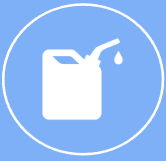
Tank storage, process safety and fluid transfer troubleshooting and maintenance support

Assentech’s comprehensive Service Reports and Test certification evidences best practice, compliance and duty of care

Experienced with COMAH sites, handling hazardous substances, RAMS generation and risk mitigation

Over 20 years of engineering expertise in the field of tank venting

Calibrated testing instrumentation is traceable to national standards

Consultative approach to cater to unique client requirements

Protected through a comprehensive Professional indemnity and Public Liability Insurance package

Assurance of customised, best-suited equipment for specific needs

Close collaboration with manufacturers to ensure optimal equipment selection

Capability to provide solutions in a variety of materials, including exotic and fibre-reinforced plastics
Urgent Facility Downtime?
Assentech can request expedited spares and replacement units as well as supplying experienced technicians to attend your facility and provide comprehensive and bespoke support in normal working hours but also on request, we do offer engineering support outside of normal operating hours
Our Technical Advice
Assentech has an enviable reputation with 25 years of tank venting experience, technical support, challenging tank venting applications, legislative compliance and maintenance practices to keep your facility safe, compliant and profitable. Our Managing Director sits on two international standards committees, is currently writing an environmental annex for API2000 and supports the Regulators on best practice. With prior arrangement, Assentech can be available for On-Site Consultancy (Site Visits and Technical Expertise).
Get in Contact with the team to discuss your organisation’s needs

